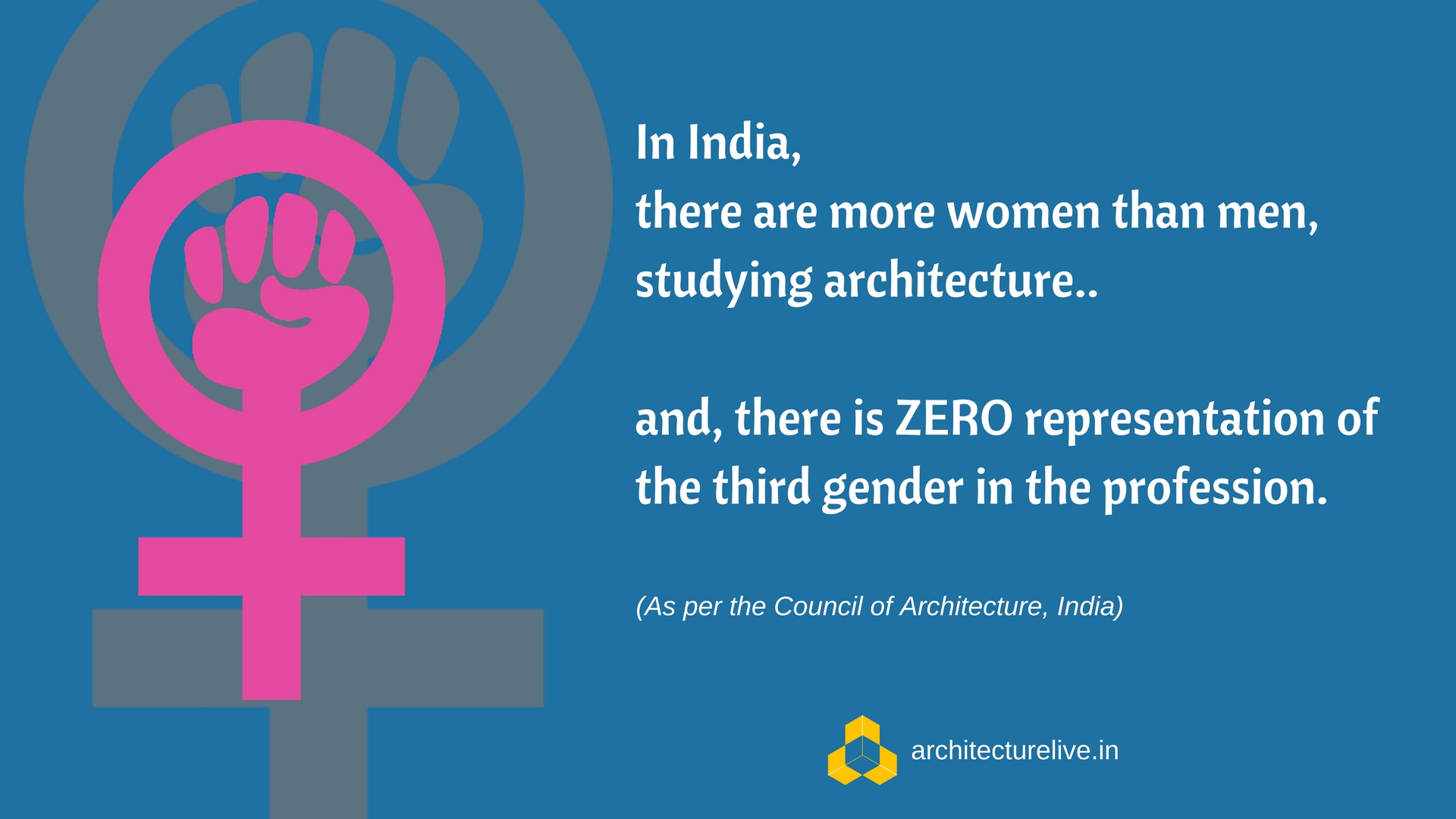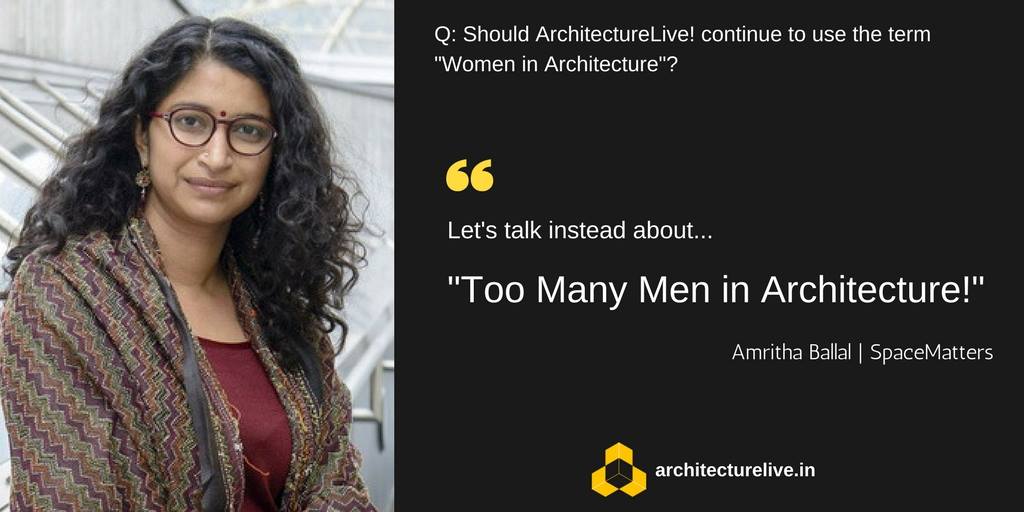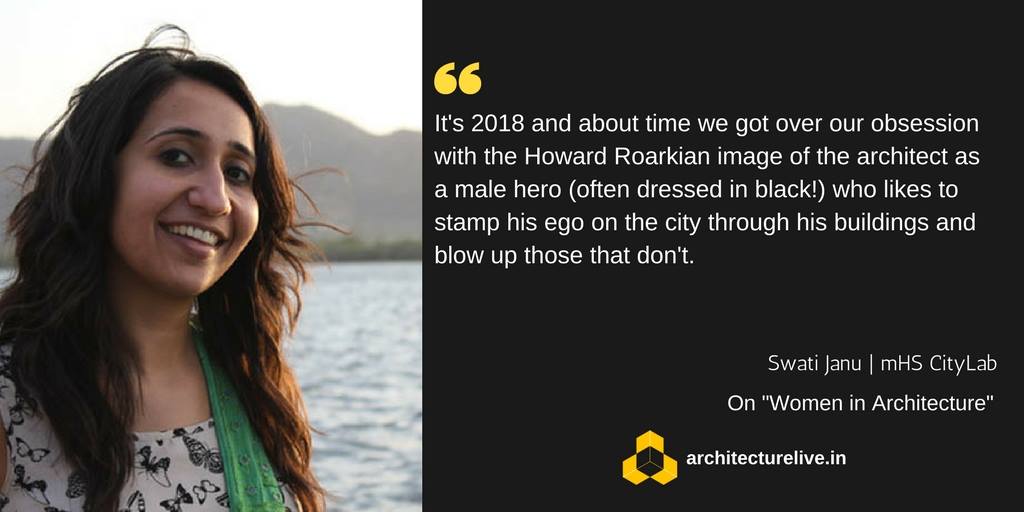We filed an RTI with the Council of Architecture, India, to know the gender statistics in the architecture profession and academics. Their reply revealed the following numbers (As on Dec 31, 2017):
No. of male architects in India: 40091
No. of female architects in India: 31489
No. of other gender architects in India: Nil.
No. of male students studying architecture in India: 29216
No. of female students studying architecture in India: 32576
No. of other gender studying architecture in India: Nil.
This also means, in coming few years, there would be more women architects in India. But, would there be also more women practicing architecture in India?
As Amritha Ballal puts,
Another concern is about the zero representation of the third gender, in architecture education as well as the profession.
We have some questions for our readers:
- Why are so many women preferring architecture as a career option?
- What makes it difficult for women to practice architecture?
- There is zero representation of the third gender in the profession. How many architecture institutions in India have admission forms that give an option to choose ‘Other’ gender?
If you have an answer to any of these questions, please use the comments sections below to share your views.










